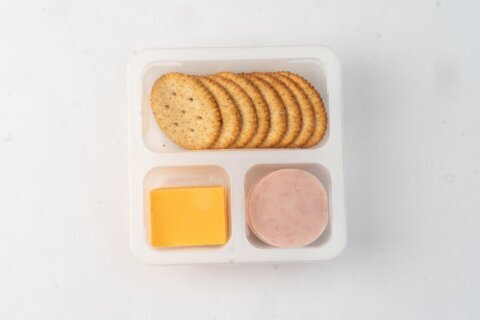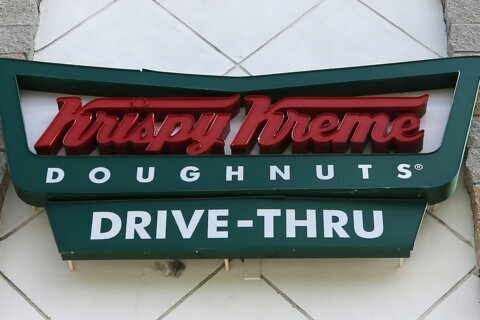WASHINGTON — In Japan, after a long day at work, it’s customary to head to an izakaya, or neighborhood bar, to meet with friends and unwind over drinks and food.
“They’re very tiny and everybody knows the mamasan and she recognizes everybody who comes in,” Jamie MacBain, beverage director at D.C.’s Daikaya, says of the izakaya.
Most of the time, the mamasan will know more than her patrons’ names — she’ll also know which bottle of liquor behind the bar belongs to whom. Bottle keep programs are common in Japan, and now, Daikaya wants to make it a tradition on its second-floor izakaya.
The program, which launched earlier this month, allows customers to purchase a bottle of Japanese whiskey, or shochu, to keep behind the bar and enjoy over a six-month time frame. And even though staff at Daikaya’s izakaya label each purchased bottle with the customer’s name (written in both English and Japanese), MacBain says that’s more for appearance: Just as he’d hoped, he now knows most of the bottle keep customers.
MacBain also aims to introduce more Washingtonians to Japanese whiskeys — a category that is growing in popularity around the world. In November, leading whiskey critic Jim Murray ranked a Japanese single malt, the Yamazaki Single Malt Sherry Cask 2013, number 1 in his annual guide to more than 4,500 whiskeys.
Japan started making whiskey in the 1920s, but the Yamazaki was the first Japanese whiskey to earn such an accolade. MacBain describes Japanese whiskey as “very Scotch-like.” In fact, the founder of Yamazaki learned to distill in Scotland.
Bottle keep patrons at Daikaya won’t be able to find a bottle of the Yamazaki Single Malt Sherry Cask 2013 (not for lack of trying), but they can choose one of eight Japanese whiskeys, ranging in price from $150 to $600 a bottle, and more than 10 bottles of another popular Japanese spirit: shochu.
If you’re not familiar with shochu now (also spelled “soju” in Korea), MacBain is willing to bet you will be soon. Korea’s Jinro soju is the best-selling brand of liquor in the world, selling more than 3 billion bottles a year, MacBain says, and the spirit is starting to take off in the U.S.
Japan has been making shochu since the 1500s, and, MacBain says, the drink can be distilled from “almost anything,” but barley, sweet potatoes and rice are the most popular.
“I hate to say that it’s vodka-like — in general, it’s clear,” says MacBain about the taste of shochu. “But there are a lot more nuances to it, and especially when it’s distilled at a lower proof.”
MacBain says shochu is approachable and easy to drink. It’s also more affordable than most spirits — bottles on Daikaya’s menu range from $78 to $170. He suggests drinking the Japanese favorite either neat, on the rocks or with hot water, which he says makes the flavors “bloom.”
“A lot of sweet potato shochus, we’ll add hot water to it, and that’s great in the winter time as well,” MacBain says.
The focus of the bottle keep program is, no doubt, on whiskeys and shochus, but like most izakayas, Daikaya’s upstairs bar also places a heavy focus on sake and Japanese-style skewers and small bites. The bar serves everything from domburi to octopus-filled dumplings to sautéed edamame and more.
And while the bottle keep program has attracted a group of regulars to Daikaya’s intimate second-floor bar, MacBain hopes it will only continue to grow and appeal to others.
“We want people to come in and feel like they’re at home — whether they’re Japanese or not — and they have a great meal or some great drinks and they have a good time,” he says.







